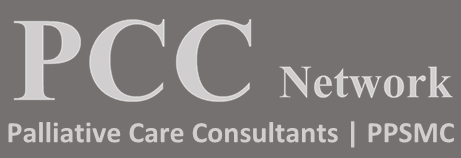A Focus on Palliative Emergencies: Seizures
Seizures in the palliative care context can occur in about 13% of cases. About 25% to 50% of palliative patients who develop seizure activity have brain metastases.¹
Seizures can be caused by either structural damage to the brain or by a systemic insult to the brain. Common causes include brain tumors – primary or metastatic, abscesses as well as a variety of metabolic issues such as hypoxia, hyperglycemia, hyponatremia, renal or hepatic failure, hypercalcemia as well as drug toxicity etc. Hypoglycemia is the most common metabolic cause of seizure activity.²
The Treatment of seizures varies according to the frequency of the convulsive episodes, the duration of each episode, whether there is a reversible cause & the goals of care for the individual patient.
Status epilepticus has traditionally been defined as seizure activity, lasting longer than 30 minutes, or 3 episodes of seizure without the return of consciousness within a 30-minute span. Treatment of status epilepticus should be instituted when a seizure last 5 minutes or longer. The treatment may vary according to the patients location i.e. hospital, hospice or home.¹
In the home setting we utilize Midazolam (Versed) 5 mg given subcutaneously STAT to treat status epilepticus. The nursing provider may repeat this dose every 20 minutes for 3 attempts if the initial dose(s) are unsuccessful in stopping the seizure.
The presence of seizures can be traumatizing for patients and their families. The most important thing is to be prepared; if there is deemed a high risk of seizure , we should have educated the family/caregivers about what to do and what not to do.
Advice to family for seizure at home: ²
- Try to make sure that the patient does not fall or bump into any sharp objects
- Do not attempt to restrain the patient
- Do not try to force anything into the patient’s mouth
- When the seizure stops, turn the patient onto his/her side
- The patient will be sleepy for a while after the seizure
- If the seizure does not stop by itself in about 5 minutes or if another seizure occurs soon after the first, call for medical assistance
- Do not shout or expect verbal commands to be obeyed
Sources:
¹ Tradounsky, G. (2013). Seizures in Palliative Care. Canadian Family Physician. 59(9), 951-955.
² Fraser Health Hospice Palliative Care Program. (2006). Twitching,Myoclonus, Seizures Symptom Management Guidelines. Available at: https://www.fraserhealth.ca/media/19FHSymptomGuidelinesMyoclonus.pdf
³ WW SRK Clinical Guidelines (2010). Available at: Symptom Response Kit (SRK) Guideline (Updated for COVID-19) – Waterloo Wellington




